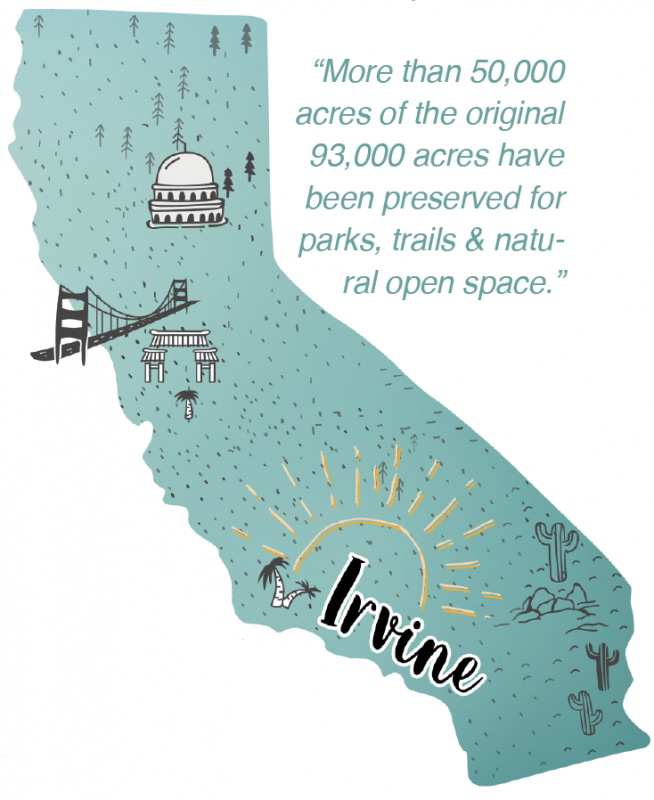When people are looking to start or move a business to Irvine, it always starts with answering the question: Why Irvine? Everyone knows that there are certainly less expensive places to start or locate a business – any city in North Dakota or Alabama for starters – but there isn’t a smarter or better place to start or locate a business than Irvine, California. And that all began with the stunningly forward thinking vision that transformed 93,000 acres into an economic powerhouse and one of the most livable cities in the United States.
Everyone knows the story of the Irvine Company. The family who owned 93,000 acres in what is now Orange County, and the company directors that followed, took a long view of this land and its place in the evolution of the area. They adopted a powerful proposition that the land, and all those who would live and work on it, would be best served by a Master Plan that fostered the highest quality of life through preservation of “nonrenewable” assets and resources.
An encroaching sprawl south from Los Angeles compelled the Irvine Company to take stewardship of the land in the 1960s in ways that would shape the City of Irvine and other communities in the area into the 21st century. They conceived of artfully designed neighborhoods and villages, acres of open space and livable neighborhood centers and regional centers that would support an economic powerhouse of Fortune 500 companies and robust, cutting edge industry clusters in the Life Sciences, Advanced Manufacturing, Information Technology and Digital Arts & Media, just to name the top performers.
 The notion that a balance of “working, living, learning and recreational environments-all integrated in a logical and aesthetic fashion” was the core value that defined the design, its implementation and its sustainability. And it stood in stark contrast to how other communities and cities in the U.S. had evolved throughout the decades characterized by cycles, changing economic drivers and personalities, demographic patterns and investment, or lack thereof.
The notion that a balance of “working, living, learning and recreational environments-all integrated in a logical and aesthetic fashion” was the core value that defined the design, its implementation and its sustainability. And it stood in stark contrast to how other communities and cities in the U.S. had evolved throughout the decades characterized by cycles, changing economic drivers and personalities, demographic patterns and investment, or lack thereof.
Continue reading

 Login
Login

















